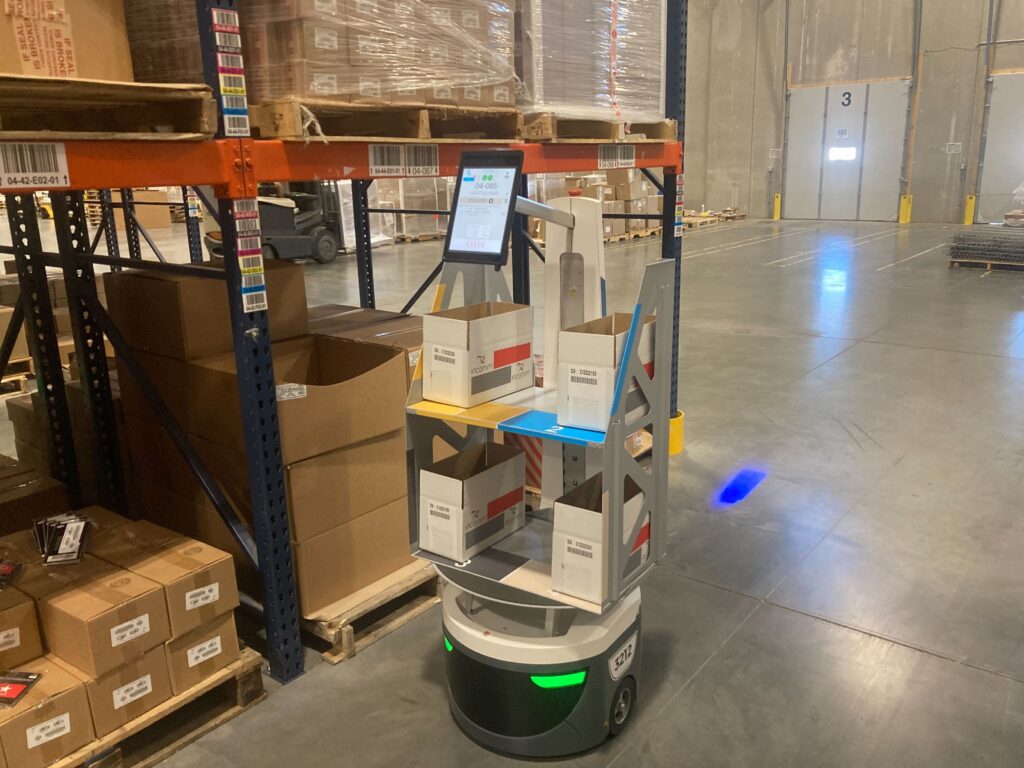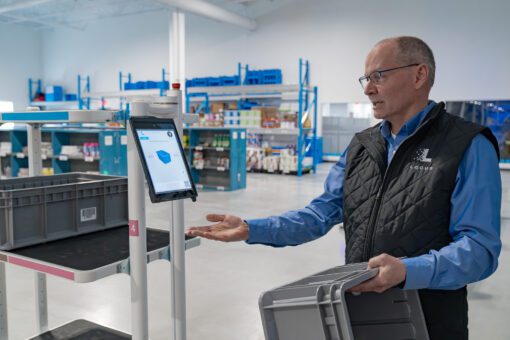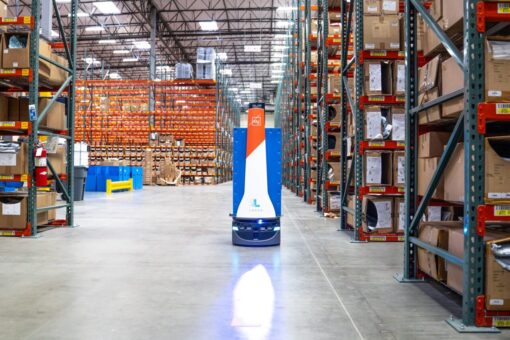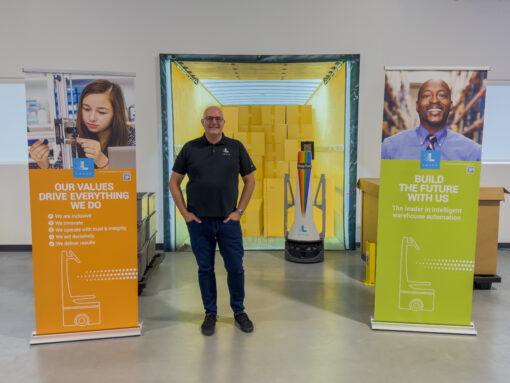WP: How to achieve 400 UPH with Locus Fast Pick
WP: How to achieve 400 UPH with Locus Fast Pick Download Now!
Beyond ROI: How Automation Improves 3PL Performance
Mary Hart, Sr. Content Marketing Manager

When third-party logistics (3PL) providers evaluate warehouse automation, the conversation often starts with the hard numbers of return on investment (ROI), throughput rates, and labor costs, and those metrics matter. But as David Green, Executive Chairman of Peak Technologies, and Mike Wills, Chief Revenue Officer, shared on a recent episode of Warehouse Automation Matters, the real story of warehouse automation runs deeper. It’s about faster adoption, measurable consistency, and the less obvious, but equally powerful, benefits that reframe how 3PLs operate.
Collapsing the 3PL Automation Learning Curve
One of the biggest fears 3PLs face is the learning curve for both managers and frontline associates. Traditionally, new systems could take months to master, but automation changes that for the better.
Green explained that with warehouse automation solutions like Locus Robotics, new associates can be up to speed in a matter of days, and not months. “From a full solution with Locus, it could be just a few days rather than a couple of months to get the process down,” he noted.
Wills added that this speed isn’t just about training once; it’s about eliminating repetitive retraining. “The learning curve is frequently longer than a quarter. Collapsing it down inside of a week is a dramatic difference to a lot of our clients”.
That kind of efficiency not only saves time but also reduces the hidden costs of turnover, which is a problem plaguing many warehouses.
Consistency Creates Predictability
Warehouse leaders know that consistency is the backbone of throughput. Robots highlight the power of consistency by moving at the same pace every time to create predictable workflows and fewer bottlenecks.
“With robotic automation, pick rates can go from the mid-fifties to up to 150 lines per hour,” Green said, describing how robot-driven consistency unlocks productivity gains. Wills further pointed out that this kind of reliability forms the foundation for scalable ROI as consistency means supervisors can trust performance day after day, season after season.
ROI Timelines That Defy Expectations
When it comes to payback, the numbers are eye-opening. In some cases, facilities partnering with Locus have seen ROI in as little as six weeks, and more commonly, returns land within a few months.
Of course, ROI depends on the starting state of the warehouse. “It’s all relevant to what the as-is condition of your starting state is,” Wills explained. High-accuracy, well-run facilities may see returns even faster, while more complex operations might take slightly longer.
But across the board, the speed of ROI makes automation one of the most financially compelling moves a 3PL can make.
The Hidden Value of “Soft” Benefits
When you’re thinking of automating your 3PL warehouse, ROI is only half the story. The softer benefits of employee satisfaction, lower turnover, and reduced fatigue can be just as important.
Workers walk up to 80% less with robots handling transport tasks, Green noted, which reduces strain and keeps productivity from falling late in the shift. “Anytime you’re optimizing what the user is seeing and feeling, it increases opportunities,” he said.
Wills agreed, pointing out that while CFOs may focus on hard costs, operators often see greater value in the quality-of-life improvements: “Adoption rates are often very quick, and they stay at an incredible high level because of the very tangible benefits these operators get”.
When warehouse operators are on board from the start, 3PL automation results in buy-in, higher morale, and a culture that is more open to innovation.
Automation as a Partner for Labor
Automation is about complementing warehouse workers, especially during seasonal surges. Green described how seasonal bots help customers scale capacity without hiring and training hundreds of temporary workers.
This model offers a double advantage of predictable performance from robots, combined with flexible human support for exceptions and complex tasks. It’s a strategy that positions 3PLs to handle peak seasons without compromising service-level agreements (SLAs).
Why Integration Matters
The conversation also highlighted an important caution that automation isn’t just about installing robots. It’s about integrating solutions into a broader warehouse strategy.
Peak Technologies positions itself as a solution integrator, weaving together best-of-breed technologies. From robotics to RFID to machine vision, into a cohesive system. That approach ensures 3PLs don’t just gain point solutions but achieve long-term, scalable improvements.
“Too often, point products get dropped into a warehouse and it’s left to the operator to harmonize them,” Wills warned. “That’s one of the big mistakes. Integration is where the optimization gains are unlocked.”
The Big Picture for 3PLs
At the end of the discussion, both Green and Wills underscored a core message that warehouse automation is no longer optional for 3PLs competing in a high-pressure, contract-driven market. To thrive, they must look beyond hardware and focus on strategy, consistency, and integration.
Or as Green put it: “It’s not just a robot win, but a win for the customer”.
The future of 3PL performance won’t be defined by how fast a single worker can push a cart. It will be defined by how intelligently providers combine people, processes, and automation to deliver predictable results, flexible capacity, and measurable ROI.
For warehouse leaders ready to start that journey, the lesson is clear to think holistically, act quickly, and partner with experts who know how to harmonize the entire operation.




